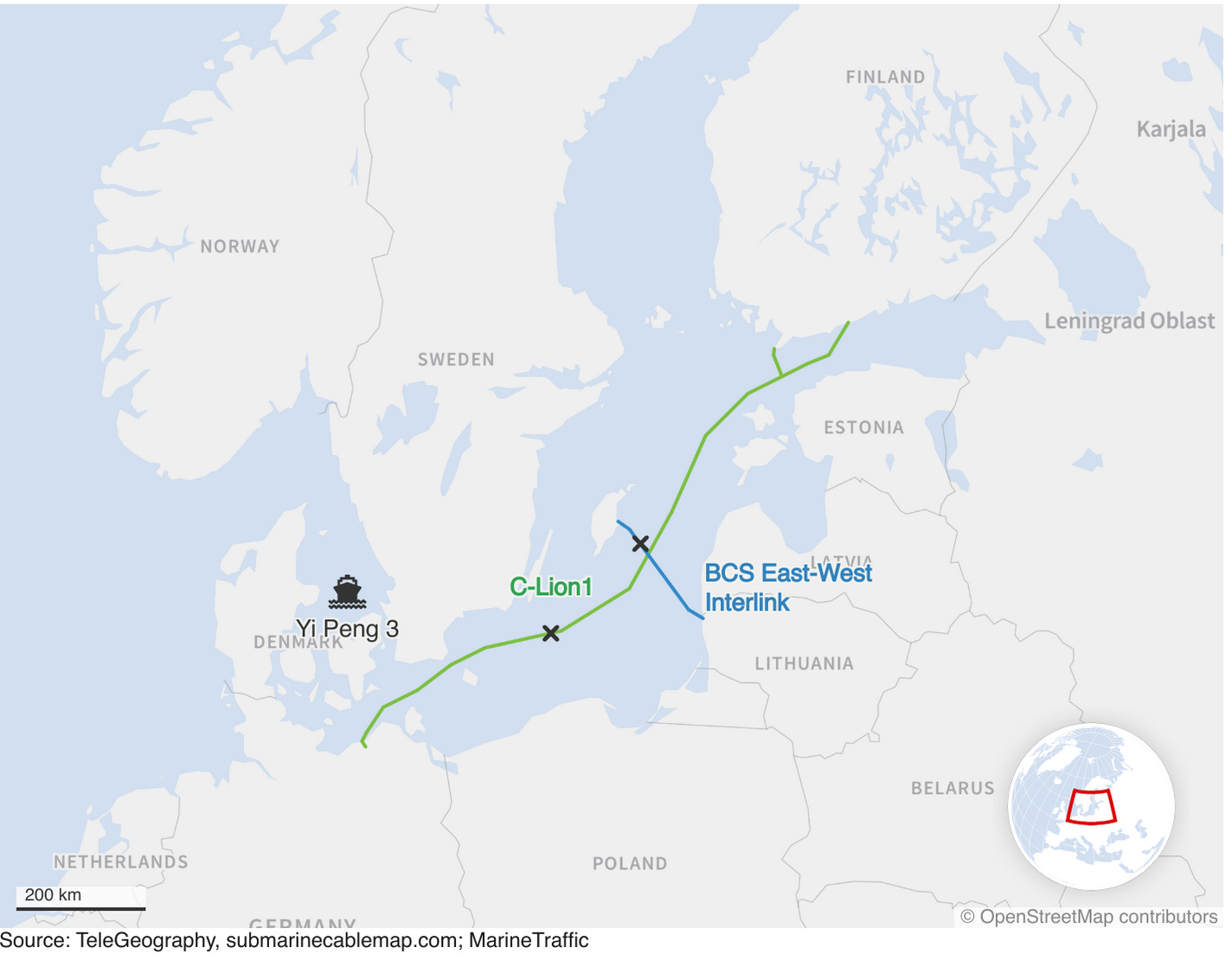Gloomy Europe looks to defend Baltic as Denmark fends off Trump in Greenland
(Originally published Dec. 31 in “What in the World“) To Europe’s growing list of troubles, add the Dunkelflaute.
It may sound like a tasty taco-pumpernickel fusion, but the Dunkelflaute is actually a German term for a weather phenomenon when dark clouds envelop northern Europe, blocking out the sun and even the wind. In other words, the kind of gloomy fall and winter conditions most non-Europeans associate with Northern Europe all the time. Well, minus the wind and sleet.
In reality, though, the region gets a Dunkelflaute about 10 times a year, each lasting 24 hours or more. But beyond contributing to the perennial Northern European tendency to dark and gloomy moods lifted only by binge drinking, the Dunkelflaute is now roiling Europe’s energy markets by putting a damper on how much power is generated from solar and wind.
Wind and solar now contribute more than 25% of the European Union’s total power supply. That means sudden decreases in wind and sunshine can send shockwaves through the energy market. Earlier this month, low winds send British power prices up nearly seven-fold, while a nasty mid-December Dunkelflaute sent the cost of electricity in Germany to 14 times the average.
And because European nations have linked their power grids in order to trade power, power shortages in Germany and the UK can drive up the cost of power everywhere else. After electricity shortages drove their own power prices up 20-fold, politicians in Norway are considering cutting off power exports to the EU to reserve more of their own hydroelectric-generated power for folks at home.
Damn the Dunkelflaute, the North Atlantic Treaty Organization is determined to beef up its military presence in the Baltic to prevent any further incidents like the suspected sabotage Christmas Day of an undersea power cable between Finland and Estonia. The Estlink 2 cable’s cut follows the severing in November of sub-sea internet cables, one between Finland and Germany and another between Sweden and Lithuania.
European officials have accused Russia and China of plotting the sabotage as part of a “hybrid warfare” against the West. Investigators, led by Sweden, are focusing on a Chinese bulk carrier, the Yi Peng 3, that left a Russian port Nov. 15 before charting a course that crossed the cables at the time of their breach, possibly by dragging its anchor along the bottom to ensnare the cables.
Finnish authorities on Thursday seized a tanker, the Eagle S, for allegedly using its anchors to cut Estlink 2. The Eagle S was sailing to Egypt from the same Russian port the Yi Peng 3 departed in November, Ust-Luga near St. Petersburg on the Gulf of Finland. And Finnish authorities on Sunday said they had found anchor tracks along the Baltic seabed stretching for dozens of kilometers. While there may be no way to dust for anchor prints, authorities believe the Eagle S, which is registered in the Cook Islands and has a Georgian and Indian crew, may be part of Russia’s shadow fleet of tankers exporting oil in violation of Western sanctions for its invasion of Ukraine. Finnish investigators also believe the Eagle S, in addition to its alleged sabotage mission, may have been outfitted to spy on NATO forces in the Baltic.

Denmark is meanwhile turning to defend itself against another potential threat, this time from the West. Danish Defense Minister Troels Lund Poulsen said last week that Copenhagen would boost military spending in Greenland. Incoming U.S. President Donald Trump said last weekend that “ownership and control of Greenland is an absolute necessity” for the U.S. to ward off threats to the Arctic. Poulsen said Denmark would spend roughly $1.5 billion to upgrade its airport in Greenland to accommodate F-35 fighters, as well as to deploy long-range drones, additional ships and sled patrols.
Denmark has more than doubled its defense spending in the past decade, putting it in third place behind Ukraine and Poland in terms of accelerating military spending, according to the latest data from the Stockholm International Peace Research Institute.
Denmark cut back its military spending at the end of the Cold War and last year spend just short of 2% of GDP on defense. But with threats from Russia and former U.S. President Donald Trump rising, Copenhagen last month announced that it would boost its defense budget by roughly 50%, allocating an additional 40.5 billion Danish crowns ($5.8 billion) on top of the 155 billion crowns it has budgeted for the military over the next decade.